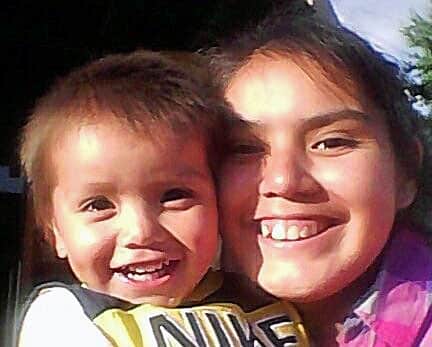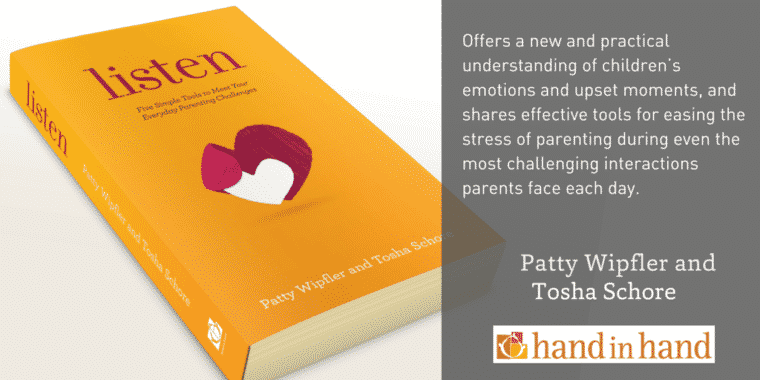Once they can speak, young children ask lots of questions. “What is on the moon?” “Why do we have to sleep?” “Do worms taste bad?” And a thousand other inquiries help children fill in their picture of how the world works. They learn from our answers, and from the fact that we don’t always know the answers. The lessons are helpful, even when questions still remain.
 Long before children can speak, however, there are core questions they ask to have answered many times each day. These are unspoken questions. The absence of language doesn't mean that these questions are unimportant. On the contrary, they are the most important and abiding questions of childhood. The answers we give determine a child’s well being.
Long before children can speak, however, there are core questions they ask to have answered many times each day. These are unspoken questions. The absence of language doesn't mean that these questions are unimportant. On the contrary, they are the most important and abiding questions of childhood. The answers we give determine a child’s well being.
Because there are no words to these questions, it can sometimes be hard for us to remember that we are being asked. Children ask, “Do I belong?” when they bring us a favorite toy as we talk with another adult. They ask, “Are you glad I’m here?” when they wake at six a.m. and crawl over to wake us with an expectant look. They ask, “Do you see who I am?” when they make jokes by putting funny things on their heads, or when they playfully dump out a whole bowlful of blocks. They ask, “Will you keep me safe?” as they encounter dogs bigger than they are on the street. And they want to know, “Am I doing all right?” when they climb into your lap as you’re trying to catch five minutes with the newspaper at the end of the day. They don’t ask in words, but children's minds are keenly tuned to filter answers from our every move, glance, and tone. When we’re relaxed and pleased with ourselves, we answer “Yes, it's good to have you in my life,” as we change their clothes, scoop them up for a hug, or hold a hand while they try walking on a curb.
But life is full of demands on parents, caregivers, teachers, and friends. So we don’t always have the presence of mind to respond as we’d like to. This is why parents and caregivers find Listening Tools so helpful. Special Time, Playlistening, Setting Limits, and Staylistening all can be done in limited amounts of time.
Using these tools communicates directly to a child that he belongs, he is welcome, that you see who he is, that you will keep him safe from the troubles of others, and safe from his own troubles. And Listening Tools communicate your caring, even when you need to offer a course correction, or listen to a big tantrum.
The following success stories are from caregivers working in preschools. The first caregiver used Setting Limits and Staylistening to let a child know that she would keep him safe from the consequences of his own troubles. With respect and understanding, she conveyed that he belonged, even when he made mistakes and had big feelings to offload. The result is a child who quickly learned to make friends. The second caregiver was working on building a bond between herself and a child new to the program. She succeeded in communicating to that child and to all the children in the class that they were important, their ideas mattered, and that she saw who they were—small children looking for importance in a big person’s world. You’ll see how a relatively short amount of time using Listening Tools can make a huge difference in a child’s life, because his core needs for affirmation are met directly and with warmth.
Staylistening ends a history of grabbing
“We had quite a bit of difficulty with one boy at the day care center where I work. As soon as another child would begin playing with a toy, he would come over and either hit the child or grab the toy away. The other children were afraid of him, and after a short while there, children avoided him. We were responding to children crying frequently because of this child’s behavior.
I am taking a Hand in Hand parenting by connection class, and I used what I have been learning with him. It worked out so well!
One day, when he had grabbed something from another child, I came to him and said, “I can’t let you do that. I am going to stay with you right now, because you aren’t able to play well with the other children.” I stayed close, and he began to cry. He ran to the cots, threw himself down on one, and cried hard. I went over, stayed close by and said, “It’s fine if you are crying, I’ll stay right here. But I can’t let you take things away from the other children.” He had a long cry. I think it helped him.
A day or so later, though, he did the same thing again, and this time I said, “I’m going to bring you outside with me, and I’m going to listen to you there. I carried him outside, sat down, put him on my lap facing me, and said, “I’m going to listen to you. You can tell me whatever you want. Why do you take things from the other children?” He cried and kicked the bench we were sitting on for a long time without saying anything. I kept my arms loosely around him.
When he slowed down I asked again and he cried some more. I held him and listened. Finally, he told me, “The other children don’t want to play with me. They don’t want to be my friend.” I asked him what else he wanted to tell me, and he cried and told me the same thing again. I kept asking him to tell me what was the matter, until he had finished crying.
When he didn’t have anything else to tell me, I said, “Thank you. I listened to you. I want you to listen to me.” He agreed, and I said, “The other children don’t want to play with you because you take their toys away. You need to wait until they are finished. Then, they’ll want to play with you again.” That was all I said. He listened. We then went back inside.
Since that day, he has been far less grabby with other children. A day or so ago, he came to me, holding hands with another child, looking so happy, saying, “Look, Miss Anne! We are friends! He is my friend!” I’m so pleased with the way things have turned out, and so is he!”
Special Time and Playlistening lift the spirits of my class
“At our center, it’s the beginning of the year, and we have three-year-olds who are totally new to the program. They are so little, and so sweet. There’s one girl who has been crying long and hard every morning since she came. She wants her Mommy. We have listened to her as best we can.
I wanted to help her feel more connected at the center, so one morning this week, when she was playing alone outside, I came up to her and offered Special Time. I said, “I want to do whatever you want to do. What do you want to do?” We had been having the children lie on the pavement while we draw chalk outlines of their bodies earlier in the week, so she immediately said, “Lie down! I want to draw your body!” The pavement was hot that day, so I said, “Oh my gosh! It’s going to be hot! Do you really want me to lie down?” And she said, “Lie down!”
So I playfully (but also somewhat truthfully) yelped as I got down on the pavement, “Oh! It’s so hot! Please hurry!” All the seventeen children started to gather around and they all began giggling and laughing. The more I yelped, the more they laughed.
The Special Time child ordered me to stretch out my arms, then to stretch out my legs, and she very slowly drew around my body. I kept playfully urging her to hurry, and the children kept laughing. It was a big event that day, seeing Miss Mirasol down on the pavement, wanting to get up, and their classmate “in charge.” I finally got up when she was done. You should have seen their faces! They were so happy, so elated, and so full of life! My Special Time child felt great—she is now doing well at our center.”
- For more games, tips and peaceful parenting advice get our free monthly newsletter
- Download our booklet on Special Time

